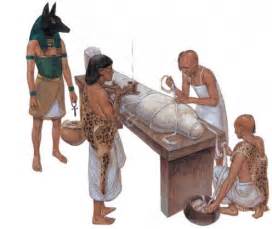Week 4: Medcine+Technology+Art
The intersection between art and medicine has been something that has existed since the existence of early civilizations—such as the Greeks or the Egyptians. In her lectures, Professor Vesna explains the progressions of this intersection and how it has helped develop the medical field by adding technological advancements to it in addition to contributing to the arts community. From the Greeks and their dissections of the human body to the mummification practices of the early Egyptians and their preservation of organs from the corpse, these methods have jumpstarted inspirations for early artists in regards to the topic of human anatomy.
The more modern projects of today reflect this intersection as well. For example, the Visible Human Project features a display of slivers of human cadavers, both male and female, for the public to observe.
One of the more interesting topics regarding the human body is how we deal with our senses when we feel pain. Diane Gromala, the speaker of the Ted Talk featured in this weeks materials, does an amazing job at showing the intersections between art and medicine. As someone who lives with chronic pain, she has developed multiple ways to Stemming from the materials this week, the motivation for my blog is the Tedx Talk video featuring Diane Gromala. She started with an interactive script that moved in the same way as certain parts of the body and soon began to use virtual reality as a therapeutic method of coping with pain. She describes it as making yourself focus more inwards instead of outwards so that you can focus on your senses more. Moreover, she paired with neurologists, other scientists, and other virtual reality artists to create these programs where the virtual reality was responsive to your levels of stress. For example, she showed an example of a snow-covered landscape in the virtual reality; the more your stress levels decrease, the sky began to clear until it was bright and sunny.
Overall, she explained that there was no quick cure to pain. However, these methods she has developed to cope with it clearly show the intersection of medicine and art, such that they are an artistic representations of a person's stress levels and are a form of medicating pain and stress.
 |
| Egyptian Mummification Process |
 |
| Exhibit in the Visible Human Project |
 |
| Gromala's Virtual Reality |
Works Cited
Vesna, Victoria. "Body Medicine Introduction." YouTube.com. 26 March 2012, Web. Retrieved 30 April 2017. https://www.youtube.com/watch?v=zEgn-fZQ8po&feature=youtu.be
Vesna, Victoria. "Medicine: Part 1." YouTube.com. 21 April 2012, Web. Retrieved 30 April 2017. https://www.youtube.com/watch?v=Ep0M2bOM9Tk&feature=youtu.be.
Vesna, Victoria. "Medicine: Part 2." YouTube.com. 21 April 2012, Web. Retrieved 30 April 2017. https://www.youtube.com/watch?v=psjnQarHOqQ&feature=youtu.be.
Vesna, Victoria. "Medicine: Part 3." YouTube.com. 22 April 2012, Web. Retrieved 30 April 2017. https://www.youtube.com/watch?v=FIX-9mXd3Y4&feature=youtu.be.
Talks, TEDx. "TEDxAmericanRiviera - Diane Gromala - Curative Powers of Wet, Raw Bea." YouTube.com. 07 December 2011, Web. Retrieved 30 April 2017. https://www.youtube.com/watch?v=cRdarMz--Pw&feature=youtu.be.

Comments
Post a Comment